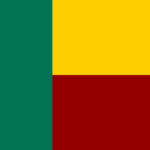The Benin moat means many things to an average Benin person. To some, it is one of the wonders of the world, and to others, it is one of the greatest human labours ever carried out in the world.
The moat, it was learnt, is one of the relics or monument of Oba Oguola and Oba Ewuare I, but at the moment, only few parts are visible while others have either been desecrated, covered up with sand and bushes or encroached on by land grabbers.
- Despite COVID-19, Nigerians escape to overseas in droves
- PODCAST: Human Trafficking: ‘Nigeria Must Ditch Its Infamous Record’
The moat, according to findings by Daily Trust, was a defence mechanism created by Oba Oguola and Oba Ewuare I to protect the territorial integrity of the Benin Kingdom.
Oba Oguola used it for defence, while the aim of Oba Ewuare I was to prevent indigenes from running away, upon the decree that no man should sleep with his wife for three years and no man should shave his head for the period because he lost his two sons.
It was learnt that the moat was in two folds – inner and outer – each created for a purpose.
The first moat (inner), it was gathered, was dug in 1280AD during the reign of Oba Oguola, while the second was dug in 1440AD during the reign of Oba Eware I.
The depth of the moat, Daily Trust learnt, varied as it was said to be over 60 metres deep in some areas and less than that in other areas.
The moat was constructed through human labour as there was no machinery to carry out such activities.

Findings also revealed that all visitors or travellers to any part of the kingdom, or those going out then had to pass through various security checks.
The high walls, it was learnt, made it difficult for invaders as those who attempted to climb over it were easily noticed by Benin soldiers.
The moat, according to unconfirmed reports, is estimated to have covered a border distance of 16,000 killometres and enclosed 6500km² of community land.
The construction is also estimated to have started as early as 800AD and finally completed around 1460AD.
Speaking to our correspondent on the monument, Chief Omo-Osagie Utetenegiabi, the Obadolagbonyi of Benin, said that till date, the moat still had something strong for indigenes.
“It is seen as the greatest human effort, compared to the China wall,” he said.
He further explained, “During that era, there were so many inter-tribal wars, so people had to create a defence mechanism for their territories.
“What is today known as Ogiamien family was having issues, just as the Edion (Uzama) had problems. These people were living outside the inner city, and to create that defence, they had to dig the moat so that before entering the city, you had to cross; and there were security guards at various entrances, who checked everyone coming into the city.”
Narrating how the outer moat was dug, Chief Utetenegiabi said, “As a result of the proclamation by Oba Ewuare 1, that no man would sleep with his wife, neither would new children be born in the kingdom for three years, a lot of people who were not happy started leaving the city, so the king dug the second moat to prevent people from moving out of the city, and those in the city were given tattoos, called iwu, as a means of identification.”
He said the tattoo was later developed into a means of identification for various families.
He further said, “The moat covered the entire Benin City. It was very effective and strong as a defence mechanism and way of forcing the people to remain in the city.
“The inner city was where the Oba and certain class of nobles and chiefs resided, while the outer city was where you had other classes of nobles, chiefs, princes and princesses. Only the Enigies and village heads lived in other areas.
He lamented that most parts of the moat had been desecrated and converted to residential areas, while other areas had been filled with sand.
He called for the assistance of the United Nations and the Edo State Government to help in reconstructing the moat, saying it could be of great help, especially now that flood is ravaging the state.
On his part, the curator of the National Commission for Museum and Monuments (NCMM), Theophilus Umogbai, described the moat as a unique and cherished traditional heritage of Benin people.
“The moat is one of the landmarks of the ancient Benin Kingdom, but today, it is at different stages of deterioration, occasioned mainly by human elements,” he added.
According to Utetenegiabi, the moat was declared a national monument in 1961 and the NCMM empowered to take over.
He said that up till the early 1970s, the depth of the moat was still very visible, but now, majority of it had been destroyed.
“It was stated clearly that there should be no human dwelling in about 50 metres to the moat, but today, it has been abused as a lot of structures have been erected on it.
“The walls of the moat were carved by those who used them for building foundation, and because of its vast nature, it became difficult for us as a body to do proper touring and monitoring.
“Once in a while we receive reports from some people living around the moat, of how it is being destroyed,” he said.
He said the Edo State Government had it in mind to resuscitate the moat, adding, “I am sure the governor would look at it now that he has been sworn in for a second term because he is an art-loving person.
“As part of efforts to resuscitate the moat, the Oba of Benin set up a committee comprising palace chiefs and officials of the NCMM to look at the situation and come up with a revised strategy.”
“With the way things are, and the level of desecration, it should be narrowed down to certain areas, the same way it was done to the Great Wall of China, which is segmented. So a section of the moat (like the depth vegetation) that seems to have a semblance of the early days can also be segmented.”

He noted that segmenting the moat would be the best way to resuscitate it because a majority of it had been converted to homes.
Utetenegiabi further said, “If well preserved, it can be used for world heritage site because the United Nations Educational, Scientific and Cultural Organisation (UNESCO) has world heritage sites. We only have two in Nigeria – the Suku landscape in Adamawa State and the Osogbo groove in Osun. These can serve as great tourism potentials for Nigeria,”
Also speaking to Daily Trust, Dr Desmond Agbama, a resident of Benin City, described the moat as very significant to an average Bini man.
“Sadly, the moat has been turned into a dustbin, but it can be harnessed to become a tourist site that would generate money for the state and the federal government,” he added.
He called on the NCMM to ensure that the moat is protected, while the government should enforce the law against its destruction.
He also said the moat, in this present condition, could be used for control erosion.
Another resident who gave his name as Osamudiame said, “While growing up we understood that the moat served as strong protection against invaders for the people of the Benin Kingdom. Unfortunately, it has been abandoned and neglected for reptiles to take over. There is the need for the government to preserve it.”

 Join Daily Trust WhatsApp Community For Quick Access To News and Happenings Around You.
Join Daily Trust WhatsApp Community For Quick Access To News and Happenings Around You.


